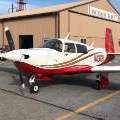Traffic Pattern Conflict With Warrior
-
Members Online
- 00-Negative
- fdc7169
- Rwsavory
- kortopates
- MikeOH
- hazek
- flyboy0681
- Sabremech
- PeteMc
- MooneyMitch
- theshick
- Deb
- rklems
- 231DF
- Slick Nick
- exM20K
- GeeBee
- Nico1
- Ragsf15e
- Paul Thomas
- Greg Ellis
- Ron McBride
- Marc_B
- TCC
- WillyT
- DrumGuruEC
- wingslevel
- Guillaume
- varlajo
- ta2too
- aerochet
- Av8rjm
- FlyingScot
- jamiesj
- Raistlin
- TangoTango
- EricJ
- AlexLev


Recommended Posts
Join the conversation
You can post now and register later. If you have an account, sign in now to post with your account.